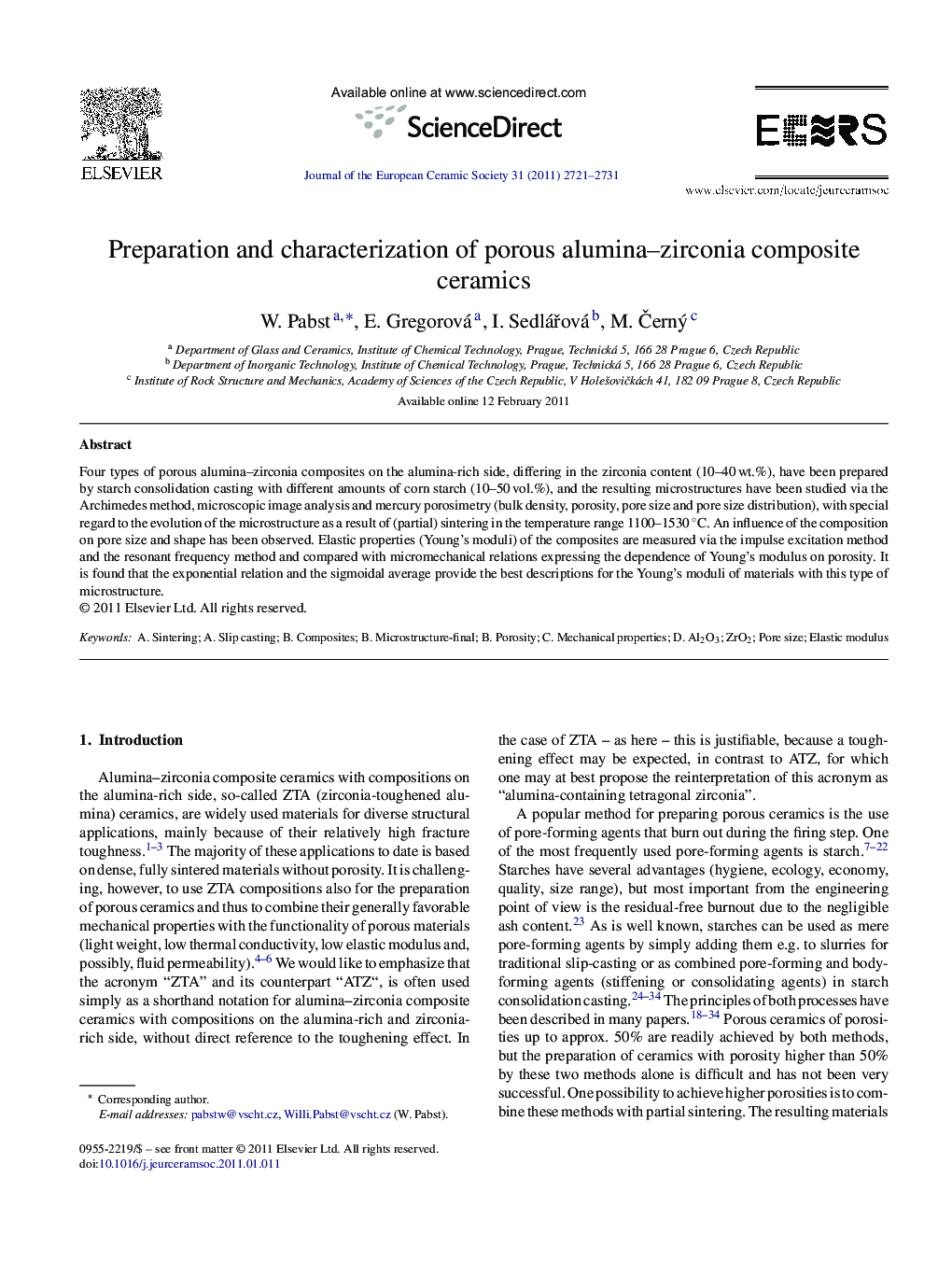| Article ID | Journal | Published Year | Pages | File Type |
|---|---|---|---|---|
| 1475187 | Journal of the European Ceramic Society | 2011 | 11 Pages |
Four types of porous alumina–zirconia composites on the alumina-rich side, differing in the zirconia content (10–40 wt.%), have been prepared by starch consolidation casting with different amounts of corn starch (10–50 vol.%), and the resulting microstructures have been studied via the Archimedes method, microscopic image analysis and mercury porosimetry (bulk density, porosity, pore size and pore size distribution), with special regard to the evolution of the microstructure as a result of (partial) sintering in the temperature range 1100–1530 °C. An influence of the composition on pore size and shape has been observed. Elastic properties (Young's moduli) of the composites are measured via the impulse excitation method and the resonant frequency method and compared with micromechanical relations expressing the dependence of Young's modulus on porosity. It is found that the exponential relation and the sigmoidal average provide the best descriptions for the Young's moduli of materials with this type of microstructure.
